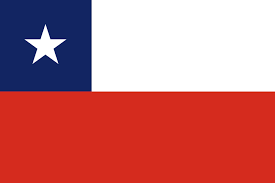Chile flag Colors Code hex, png svg
History of the Chilean Flag
The Chilean flag, known as “La Estrella Solitaria” (The Lone Star), has a history dating back to the early 19th century, closely tied to Chile’s struggle for independence from Spanish rule.
- First National Flag (1812): Known as the “Patria Vieja” (Old Fatherland) flag, it had three horizontal stripes of blue, white, and yellow. It was used until 1814 when Chilean forces were defeated by Spanish loyalists.
- Second National Flag (1817): After the victory at the Battle of Chacabuco, the “Transition Flag” was adopted. It had three vertical stripes of blue, white, and red.
- Current Flag (1817-Present): The final design of the Chilean flag was adopted on October 18, 1817. It consists of two horizontal bands of white and red, with a blue square in the top left corner containing a white five-pointed star.
Colors and Their Meanings
- Blue: Represents the sky and the Pacific Ocean that borders Chile.
- White: Symbolizes the snow-covered Andes Mountains, a prominent geographical feature of the country.
- Red: Stands for the bloodshed of those who fought for Chile’s independence.
- White Star: The star represents a guide to progress and honor.
Symbolism
The Chilean flag is deeply symbolic of the nation’s geography, history, and the sacrifices made for its independence. Each color and the star hold significant meanings that reflect the country’s natural beauty and the courage of its people.
Guess the Flags Quiz
Sharing is caring 🤗

National Symbols 👇
- 🏁 National Flags
- 🦁 National Animals
- 🐦 National Birds
- 🌻 National Flowers
- 🌴 National Trees
- 🥭 National Fruits
- 🍹 National Drinks
- 👴 National Founders
- ☘️ National Emblems
- 🍲 National Dishes
- 🏛️ National Monuments
- ✍️ National Poets
- 🕌 National Mausoleums
- 🎺 National Instruments
- 🦸 National Heroes
- 📆 National Days

